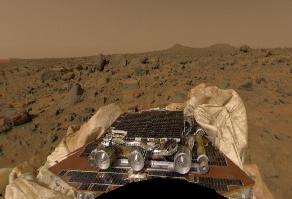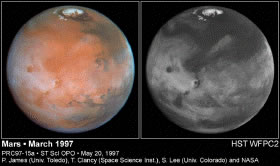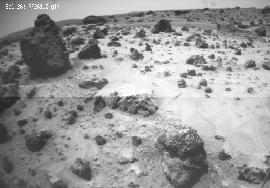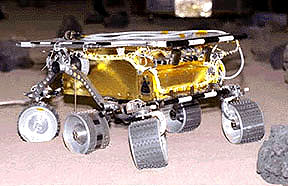The Lamb.
Click on image for full size
Image from: NASA/JPL
The Lamb
The small, round rock shown here was named The Lamb. Soils found around the Lamb by Mars Pathfinder's Rover were unique. They seem to be made of a special sort of iron which requires more water than is presently seen on Mars. This finding could show that in the past, Mars was warmer and had more water. This would help answer large questions scientists have about Mars. Perhaps there was enough water to actually rain on the surface!
You might also be interested in:

Spinning the Rover's rear wheels was one way for scientists to test the soil of Mars. As the wheels dug into the surface, the Rover discovered that much of the ground is made of dust, possibly deposited
...more
People were really excited when Pathfinder landed on Mars on July 4, 1997. The Mars Pathfinder mission (MPF for short!) was sent to Mars to look at the rocks and soil of Mars. The MPF was actually 2 parts,
...more
Unlike the Earth, where clouds are found around the entire globe, on Mars, clouds seem only to be found near the equator, as shown in this Hubble telescope image. This may be because water of Mars may
...more
This image shows the rock called Pooh Bear. Soil found near Pooh Bear seemed to be a clumpy kind, made of little fine grains and cloddy. This was different from the soils found near the rock Scooby Doo,
...more
The Mars Odyssey was launched April 7, 2001. After a six-month journey, the Odyssey arrived at Mars on October 24, 2001. The instruments onboard the Mars Odyssey will study the minerals on the surface
...more
The Mars 2005 mission is still in the planning stages. It is set to launch in the year 2005.
...more
Aerobraking slowed the Mars Global Surveyor down when it reached Mars. Aerobraking also helped MGS to get into the right orbit for mapping the surface of Mars. Aerobraking means that the MGS flew through
...more















